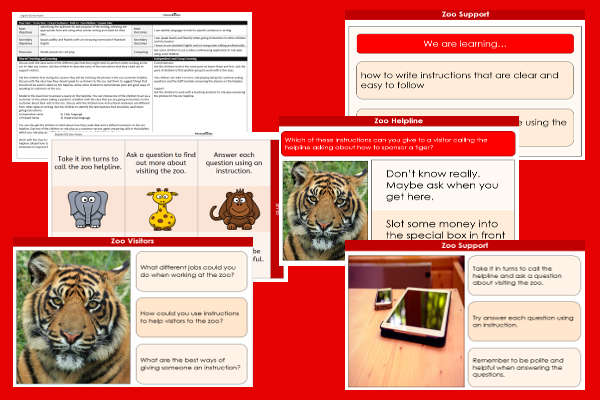Lesson Five – Zoo Helpline

This English teaching pack for Key Stage Two gets the children to role-play acting as a customer service agent to answer queries about a zoo using instructions to provide visitors with information about animals and other facilities.
The class can identify and explain how to use Standard English when talking professionally to visitors to a zoo to answer their queries.
Download this teaching pack including a lesson plan, classroom activities and an interactive presentation to teach the children to role-play acting as a customer service agent to answer queries about a zoo using instructions to provide visitors with information about animals and other facilities
Activities in this teaching pack include a table display card to use role-play to model how to use instructions and Standard English to illustrate how to answer questions about a zoo visit to provide visitors with information about animals and other facilities.
The interactive presentation gets the children to explore how to role-play acting as a customer service agent to answer queries about a zoo using instructions.
This lesson is part of an English scheme of work to get the children to read and write different instructions that can be used to support visitors to a zoo. There are teaching activities for shared learning, differentiated worksheets to support independent learning and interactive presentations to introduce concepts and key skills.
-

Shape Locations
Explain and model how to record and change the co-ordinate positions of some different geometric shapes using translation and reflection movements in the first quadrant.
-

Shape Symmetry
Explore, record and compare the matching lines of symmetry that can be found in a range of different geometric shapes as part of their individual properties
-

School Classrooms
Explain and record how to link pairs of sentence clauses about things that might happen in a school classroom using a range of matching conjunctions
-

Animal Encyclopaedia
Design and produce a class encyclopaedia including entries and information about different classes of animals found in the world
